Scarface (1932 film)
9 /10 1 Votes
100% Rotten Tomatoes Genre Action, Crime, Drama Country United States | 7.8/10 IMDb Duration Language English
Italian | |||||||||||||||||||||||||||||||||
 | ||||||||||||||||||||||||||||||||||
Director Howard Hawks
Richard Rosson Release date April 9, 1932 (1932-04-09) Based on Scarface
by Armitage Trail Writer Armitage Trail (novel), Ben Hecht (screen story), Seton I. Miller (continuity), John Lee Mahin (continuity), W.R. Burnett (continuity), Seton I. Miller (dialogue), John Lee Mahin (dialogue), W.R. Burnett (dialogue) Directors Howard Hawks, Richard Rosson Producers Howard Hawks, Howard Hughes Screenplay Howard Hawks, Ben Hecht, Armitage Trail, W. R. Burnett, Seton I. Miller, John Lee Mahin Cast Paul Muni (Tony 'Scarface' Camonte), Ann Dvorak (Cesca Camonte), Karen Morley (Poppy), Osgood Perkins (John 'Johnny' Lovo), C. Henry Gordon (Insp. Ben Guarino), George Raft (Guino Rinaldo)Similar movies Scarface , The Great Beauty , Bridesmaids , Airplane! , Last Man Standing , Seven Psychopaths | ||||||||||||||||||||||||||||||||||
Scarface 1932 original movie trailer remastered by eezeebonez
Scarface (also known as Scarface: The Shame of the Nation and The Shame of a Nation) is a 1932 American pre-Code gangster film starring Paul Muni as Antonio "Tony" Camonte. It was produced by Howard Hughes and Howard Hawks and directed by Hawks. The story is based on Armitage Trail's 1929 novel of the same name, which is loosely based on the rise and fall of Al Capone. The film features Ann Dvorak as Camonte's sister, and also stars Karen Morley, Osgood Perkins, and Boris Karloff. The plot centers on gang warfare and police intervention when rival gangs fight over control of Chicago. A version of the Saint Valentine's Day Massacre is also depicted.
Contents
- Scarface 1932 original movie trailer remastered by eezeebonez
- Scarface 1932 cafe hit scene
- Plot
- Cast
- Background and development
- Issues with censors
- Filming
- Alternate ending
- X motif
- Cultural references
- Source music
- Reception
- Legacy
- Release
- Scarface 1932
- References
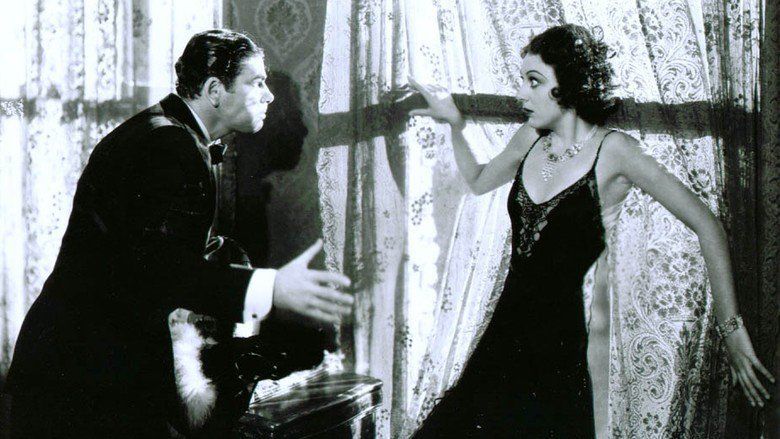
The film was the basis for the Brian De Palma 1983 film of the same name starring Al Pacino.

Scarface 1932 cafe hit scene
Plot
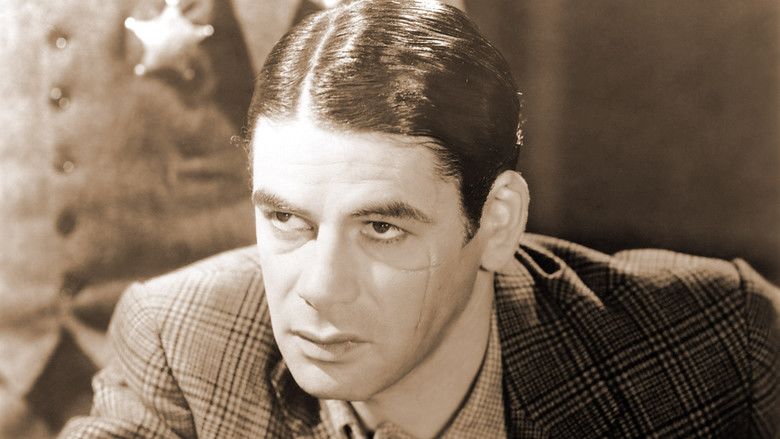
In 1920s Chicago, Italian immigrant Antonio "Tony" Camonte acts on the orders of Italian mafioso John "Johnny" Lovo and kills "Big" Louis Costillo, the leading crime boss of the city's South Side. Johnny then takes control of the South Side with Tony as his key lieutenant, selling large amounts of illegal beer to speakeasies and muscling in on bars run by rival outfits. However, Johnny repeatedly warns Tony not to mess with the Irish gangs led by O'Hara, who runs the North Side. Tony soon starts ignoring these orders, shooting up bars belonging to O'Hara, and attracting the attention of the police and rival gangsters. Johnny realizes that Tony is out of control and has ambitions to take his position.

Meanwhile, Tony pursues Johnny's girlfriend Poppy with increasing confidence. At first, she is dismissive of him but pays him more attention as his reputation rises. At one point, she visits his "gaudy" apartment where he shows her his view of an electric billboard advertising Cook's Tours, which features the slogan that has inspired him: "The World is Yours."
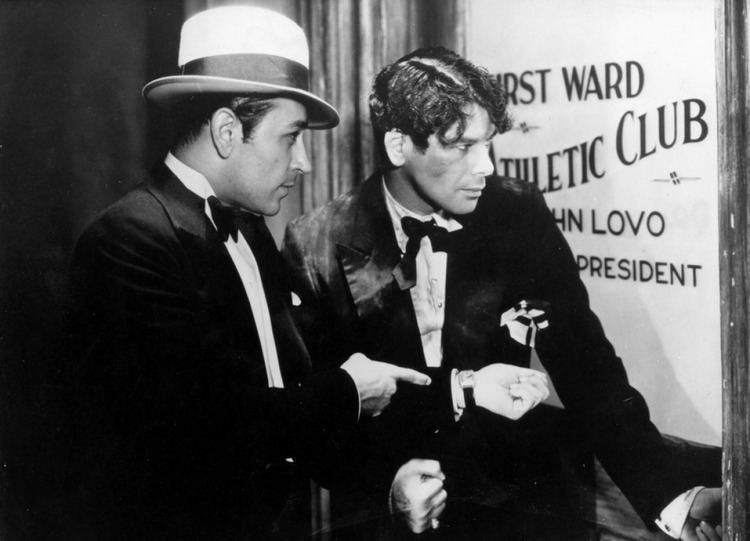
Tony eventually decides to declare war and take over the North Side. He sends the coin flipping Guino Rinaldo, one of his best men and also his close friend, to kill O'Hara in a florist's shop that he uses as his base. This brings heavy retaliation from the North Side gangs, now led by Gaffney and armed with Thompson submachine guns—a weapon that instantly captures Tony's dark imagination. Tony leads his own forces to destroy the North Side gangs and take over their market, even to the point of impersonating police officers to gun down several rivals in a garage. Tony also kills Gaffney as he makes a strike at a bowling alley. Johnny believes that his protégé is trying to take over, and he arranges for Tony to be assassinated while driving in his car. Tony manages to escape this attack, and he and Guino kill Johnny, leaving Tony as the undisputed boss of the city.

Tony's actions have provoked a public outcry, and the police are slowly closing in. Then he sees his beloved sister Francesca ("Cesca") with Guino, and kills his friend in a jealous rage—before the couple can inform him of their secret marriage. His sister runs out distraught and tells the police what he has done. The police move to arrest Tony for Guino's murder, and Tony holes up in his house and prepares to shoot it out. Cesca comes back, planning to kill him, but ends up helping him to fight the police. Moments later, however, she is killed by a stray bullet. As the apartment fills with tear gas, Tony leaves down the stairs, and the police confront him. Tony pleads for his life, but then makes a break for it, only to be gunned down by the police. Outside, the electric billboard blazes "The World is Yours."
Cast
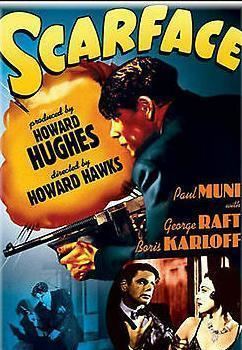
Background and development
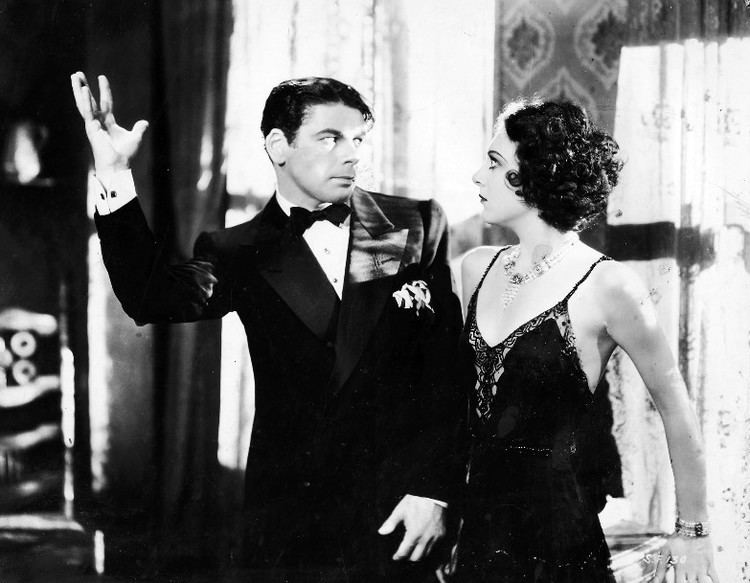
The film was adapted by Ben Hecht in only eleven days from Armitage Trail's 1929 novel Scarface, and additional writing was provided by W. R. Burnett, John Lee Mahin, and Seton I. Miller related to continuity and dialogue. Trail (pseudonym for Maurice Coons) wrote for a number of detective story magazines during the early 20s, but died of a heart attack at the age of 28, shortly before the release of the 1932 film.
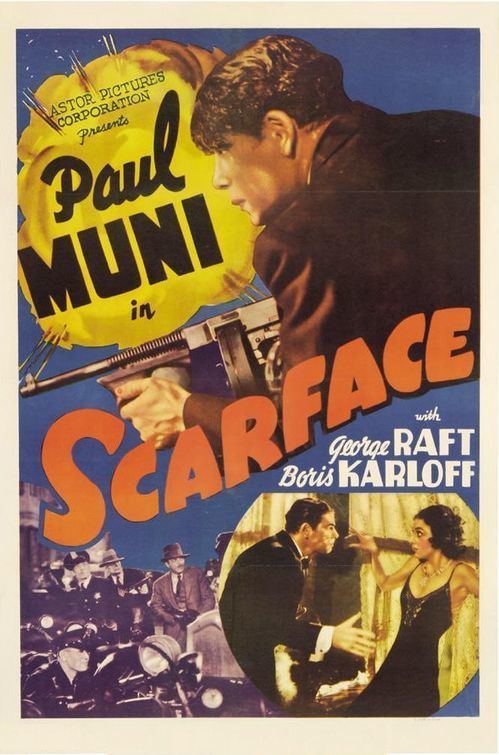
Both the film and novel are loosely based upon the life of Al Capone, whose nickname was "Scarface". In his memoir about his time as a young reporter in Chicago, Gaily, Gaily (1963), excerpted as “No Room for Vice” in Playboy, January 1959, Ben Hecht reminisced about having known “Big Jim” Colosimo socially and briefly meeting a young Capone. Capone was rumored to have liked the film so much that he owned a print of it. Ben Hecht also said that Capone's men came to visit him to make sure that the film was not based on Capone's life. He told them that the film was fictitious, and the two left him alone. The introduction for the film's screening on Turner Classic Movies even stated that Hecht convinced the men to work as consultants for him.
The most obvious references to Capone and actual events from the Chicago gang wars—especially to audiences at the time of the film's release:
Issues with censors
The original script had Tony's mother loving her son unconditionally, accepting his lifestyle, and even accepting money and gifts from him. In addition, there was a politician who despite campaigning against gangsters on the podium, is shown partying with them after hours. The script ending had Tony staying in the building, unaffected by tear gas and a multitude of bullets fired at him. It is not until the building is on fire that Tony is forced to exit the building, guns blazing. He is sprayed with police gun fire but appears unfazed. Upon noticing the police officer who's been arresting him throughout the film, he fires at him, only to hear a single "click" noise implying that his gun is empty. He is then killed after being shot several times by said police officer. A repeated clicking noise is heard on the soundtrack implying that he was still attempting to fire while he was dying.
After repeated demands for a script rewrite from the Hays Office, Hughes ordered Hawks to shoot the film, "Screw the Hays Office, make it as realistic, and grisly as possible."
Two other prominent gangster films produced about the same time but released over a year earlier to huge success were Little Caesar (January 1931) and The Public Enemy (April 1931). As is the case with Scarface, both of these films were also based on earlier novels.
Filming
Hawks shot the film at three different locations: Metropolitan Studios, Harold Lloyd Studios and the Mayan Theater in Los Angeles. Shooting took three months with the cast and crew working seven days a week. Several accidents happened on the set. Harold Lloyd's brother, Gaylord, lost an eye when he visited the set and was accidentally shot with live ammunition. Raft also received a head injury during the death scene of his character when he accidentally hit the door frame while he was slumping to the floor.
Alternate ending
The first version of the film (Version A) was completed on September 8, 1931, but censors would not allow its release because of concerns that it glorified the gangster lifestyle and showed too much violence. Several scenes had to be edited, the subtitle "The Shame of the Nation" as well as a text introduction had to be added, and the ending had to be modified.
The alternate ending (Version B) differs from the original ending in the manner that Tony is caught and in which he dies. Unlike the original ending in which Tony escapes the police and dies after getting shot several times, the alternate ending starts with Tony reluctantly handing himself over to the police. After the encounter, Tony's face is not shown again. A scene follows in which a judge is addressing Tony during sentencing. The next scene is the finale, in which Tony (seen from a bird's eye view) is brought to the gallows, where he is finally put to an end by being hanged.
However, Version B still did not pass the New York censors, so Howard Hughes disowned it and finally in 1932 released Version A—with the added text introduction—in states that lacked strict censors (Hughes also attempted to take the New York censors to court). This 1932 release version led to bona-fide box office status and positive critical reviews. Hughes also made an attempt to release the film under the title "The Scar" when the original title was disallowed by the Hays office.
"X" motif
Hawks used an "X" foreshadowing technique throughout the film (seen first in the opening credits) that was chiefly associated with death - appearing many times (but not all) whenever a death is portrayed; the motif shows up in numerous places, most prominently as Tony's "X" scar on his left cheek.
Cultural references
The serious play that Tony and his friends go to see, leaving at the end of Act 2, is John Colton and Clemence Randolph's Rain, based on W. Somerset Maugham's story "Miss Sadie Thompson". The play opened on Broadway in 1922 and ran throughout the 1920s. (A film version of the play, also titled Rain and starring Joan Crawford, was released by United Artists the same year as Scarface.)
Source music
The tune that Tony whistles twice in the film is the sextet from Gaetano Donizetti’s popular opera Lucia di Lammermoor. The song Cesca sings while playing the piano is "Wreck of the Old 97".
Reception
On the review aggregate website Rotten Tomatoes, Scarface holds a 100% "Fresh" rating with all 27 reviews being positive.
Legacy
Brian De Palma directed a 1983 remake starring Al Pacino. The 2003 DVD "Anniversary Edition" limited edition box set of the 1983 film included a copy of its 1932 counterpart. At the end of the 1983 film, a title reading "This film is dedicated to Howard Hawks and Ben Hecht" appears over the final shot.
In 1994, Scarface was selected for preservation in the United States National Film Registry by the Library of Congress as being "culturally, historically, or aesthetically significant". The character of Tony Camonte ranked at number 47 on AFI's 100 Years... 100 Heroes and Villains list.
The film launched Raft's lengthy career as a leading man. Raft, in the film's second lead, had learned to flip a coin without looking at it, a trait of his character, and he made a strong impression in the comparatively sympathetic but colorful role (It was Howard Hawks' idea to get Raft to use this in the film to camouflage his lack of acting experience). A reference is made in Raft's later role as gangster Spats Columbo in Some Like it Hot (1959), wherein he asks a fellow gangster (who is flipping a coin) "Where did you pick up that cheap trick?"
The film was named the best American sound film by critic and director Jean-Luc Godard in Cahiers du Cinéma.
In June 2008, the American Film Institute revealed its "Ten Top Ten"—the best ten films in ten "classic" American film genres—after polling over 1,500 people from the creative community. Scarface was acknowledged as the sixth best in the gangster film genre. The 1983 version was placed 10th, making Scarface the only film to make the same "10 Top 10" list as its remake.
Universal announced in 2011 that the studio is developing a new version of Scarface. The studio claims that the new film is neither a sequel nor a remake, but will take elements from both this and the 1983 version, including the basic premise of a man who becomes a kingpin in his quest for the American Dream. Martin Bregman produced the 1983 remake, and he will produce this new version, as well. David Ayer will write the screenplay. On August 11, 2016 it was announced that Antoine Fuqua is in talks to direct the remake. On February 10, 2017, Fuqua left the remake and the Coen brothers are rewriting the script.
Release
Scarface was released in theatres on April 9, 1932. The film was released on DVD on May 22, 2007, and again on August 28, 2012, in celebration of the 100th anniversary of Universal Studios, by Universal Pictures Home Entertainment.
Scarface 1932
References
Scarface (1932 film) WikipediaScarface (1932 film) IMDbScarface (1932 film) Rotten TomatoesScarface (1932 film) themoviedb.org
